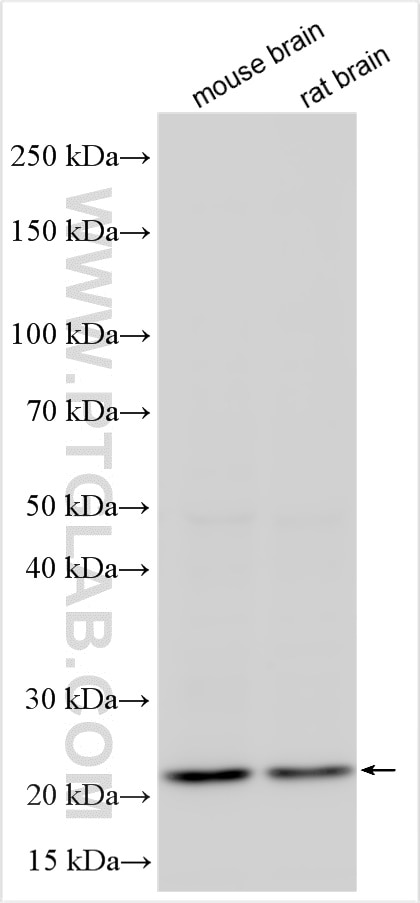Anticorps Monoclonal anti-RAB35
RAB35 Monoclonal Antibody for WB, ELISA
Hôte / Isotype
Mouse / IgG2a
Réactivité testée
Humain, Lapin, rat, souris
Applications
WB, ELISA
Conjugaison
Non conjugué
CloneNo.
3H3E1
N° de cat : 68552-1-Ig
Synonymes
Galerie de données de validation
Applications testées
| Résultats positifs en WB | tissu cérébral de souris, tissu cérébral de rat |
Dilution recommandée
| Application | Dilution |
|---|---|
| Western Blot (WB) | WB : 1:1000-1:8000 |
| It is recommended that this reagent should be titrated in each testing system to obtain optimal results. | |
| Sample-dependent, check data in validation data gallery | |
Informations sur le produit
68552-1-Ig cible RAB35 dans les applications de WB, ELISA et montre une réactivité avec des échantillons Humain, Lapin, rat, souris
| Réactivité | Humain, Lapin, rat, souris |
| Hôte / Isotype | Mouse / IgG2a |
| Clonalité | Monoclonal |
| Type | Anticorps |
| Immunogène | RAB35 Protéine recombinante Ag21424 |
| Nom complet | RAB35, member RAS oncogene family |
| Masse moléculaire calculée | 201 aa, 23 kDa |
| Poids moléculaire observé | 23 kDa |
| Numéro d’acquisition GenBank | BC015931 |
| Symbole du gène | RAB35 |
| Identification du gène (NCBI) | 11021 |
| Conjugaison | Non conjugué |
| Forme | Liquide |
| Méthode de purification | Purification par protéine A |
| Tampon de stockage | PBS with 0.02% sodium azide and 50% glycerol |
| Conditions de stockage | Stocker à -20°C. Stable pendant un an après l'expédition. L'aliquotage n'est pas nécessaire pour le stockage à -20oC Les 20ul contiennent 0,1% de BSA. |
Informations générales
RAB35 is a member of the small GTPase superfamily. Like the other Rab proteins, RAB35 has 2 consecutive cysteine residues at its C terminus, and this region is thought to be involved in membrane association. Rab35 is found on the cell surface and endosomes, where it has been proposed to play a role in recycling of the transferrin and other receptors.
Protocole
| Product Specific Protocols | |
|---|---|
| WB protocol for RAB35 antibody 68552-1-Ig | Download protocol |
| Standard Protocols | |
|---|---|
| Click here to view our Standard Protocols |


